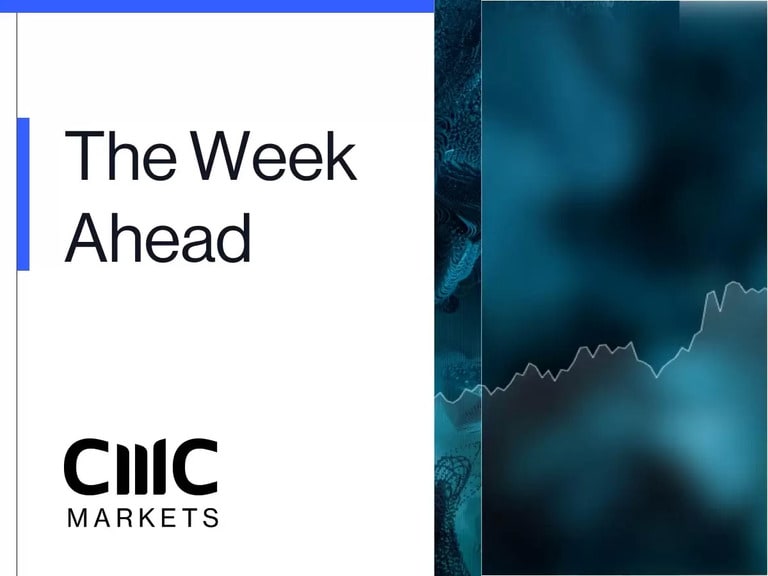From frustrated walkouts to trillion-dollar coin-minting suggestions, there’s been a recent stir in the Senate regarding US debt matters over the past few weeks. With every passing minute, the US debt ceiling draws closer to its June 1st deadline, leaving investors and traders across the globe increasingly anxious over the US government’s willingness to default on its multi-trillion-dollar debt. While there have been mixed reactions to the recent discourse among democrats and republicans, some analysts believe that this might actually be the time it happens. In this article, we will explore both sides of the debt ceiling argument and analyse it alongside the history of past deadlocks in the US government.
What is the US Debt Ceiling?
The US debt ceiling is a legislative cap on the national debt the US Treasury can incur. This limits the amount the federal government can pay by borrowing more money on top of the debt that it has already borrowed.
The debt ceiling was originally introduced in 1917 as a means of providing Congress with the ability to control the government's borrowing authority. Its purpose was to ensure that the executive branch did not have unlimited power to accumulate debt. Over the years, the debt ceiling has undergone changes and amendments to reflect the evolving financial landscape of the nation. The present debt ceiling is an aggregate limit applied to nearly all federal debt, established by the Public Debt Acts of 1939.
US Debt & Treasury Securities
It’s vital to first understand how the federal government is funded to fully understand the ballooning of US debt. The US Treasury issues various debt instruments, such as bills, notes and bonds. These debt instruments are used to finance the federal government by selling the debt to public market investors and then borrowing back the proceeds. These debt securities are backed by the full faith and credit of the US government and are considered among the world’s safest investments. The interest rates on these securities is often used as benchmarks to determine interest rates for other types of borrowing.
Ever wondered why US treasury yields are considered risk-free? That's because, to date, the US has never reached the point of default where the Treasury could not pay US debt obligations. Each time the US comes close to defaulting on its debt, the debt ceiling is eventually raised after a series of frantic and often hostile discussions between both the Democrats and Republicans. This typically involves concessions on spending from both sides. That said, it has been considered close on several occasions.
Current State of the US Debt
As of 23rd May 2023, the United States has yet to raise the debt ceiling after a series of talks between President Joe Biden and Republican representative Kevin McCarthy. According to Treasury Secretary Janet Yellen, the US Treasury will likely run out of funds by early June if the debt ceiling is not raised. This has exacerbated the situation as the debt ceiling deadline of 1st June 2023 draws nearer each day.
With a substantial national debt reaching upwards of US$31 trillion, US spending shows no sign of slowing down. This debt is primarily the result of government spending exceeding revenue, leading to budget deficits. When the government needs to borrow money to cover the deficits, by issuing the instruments mentioned earlier - Treasury securities, including Treasury bonds, notes, and bills.
The debt ceiling becomes relevant when the outstanding debt approaches its limit. At that point, the Treasury Department must take measures to ensure that the government does not exceed the authorised borrowing limit.
Debates & Controversies Surrounding the Debt Ceiling
The debate over the debt ceiling has been an ongoing point of contention for years. Proponents argue that the debt ceiling serves as an essential check on government spending to ensure fiscal discipline, believing that unchecked spending can lead to dangerous levels of national debt. On the other hand, critics claim that the debt ceiling has become a political tool that can be wielded for partisan purposes. They argue that the uncertainty surrounding the debt ceiling creates unnecessary market volatility and potentially harms the economy.
In recent years we have seen multiple instances of Congress being forced to increase the debt ceiling. In each of these cases, debates and negotiations were filled with questions of national economic policy, making for a difficult and counterproductive process. There has also been an array of proposals made to reform the debt ceiling process or to replace it with an alternative mechanism that would allow Congress more control over national spending while avoiding potential economic disruptions.
The current situation leaves the question of how Congress and the Administration will address this issue in the future without a definitive conclusion. While the need for fiscal discipline is clear, coming to a consensus on the best way to achieve it is more complicated. As long as national spending and debt remains a pressing issue, debates surrounding the debt ceiling will continue to be a hotbed of political controversy.
What if the US Does Not Raise the Debt Ceiling in Time?
If discussions between both parties fall through and the debt ceiling is not raised in a timely manner, the government must then rely on its existing reserves and borrowing options. Once those are exhausted, it can have severe consequences for the country.
One such potential outcome is a government shutdown, where non-essential government services are halted, affecting various sectors and citizens relying on government support. Americans had a preview of this during the government shutdown in 2013, where the government disagreed over the 2014 Continuing Appropriations Resolution bill. This shutdown lasted 16 days and caused major disruptions for government programmes and legal proceedings.
Another severe consequence of the US defaulting on its debt obligations due to reaching the debt ceiling would be the possibility of a credit rating downgrade. Rating agencies, such as Standard & Poor's (S&P) and Moody's, regularly evaluate the creditworthiness of governments and institutions.
Credit rating agencies will take that as a negative sign if the US government fails to meet its payment obligations. This could ultimately lead to a downgrade in the country's credit rating, making it more expensive to acquire loans in the future. One such scenario occurred in 2011 when S&P issued a negative outlook on the United States' AAA sovereign-debt rating for the first time since the rating agency's establishment in 1860. They downgraded the ratings from AAA to AA+, threatening the reputation of US treasury securities being risk-free. Therefore, the government needs to reach a consensus and increase the debt ceiling to avoid any potential repercussions of a credit rating downgrade and the risk of treasury securities getting their reputation tainted.
Possible Solutions and Alternatives
Given the challenges associated with the debt ceiling, various proposals have emerged to reform or even abolish it. Some suggest introducing a more flexible system that automatically adjusts the debt limit based on economic indicators or budget projections. This would allow for more flexibility in responding to changing economic conditions while still providing an important limit on government borrowing. Other alternatives include a balanced budget amendment or stricter fiscal rules.
However, such changes to the debt ceiling system would require a comprehensive legislative process, which may bring about a whole new set of problems between both parties as they discuss spending priorities.
Recent Developments & Future Outlook
The United States has faced several debt ceiling crises in recent years, with last-minute negotiations and temporary measures to avoid default. These crises create uncertainty in financial markets and raise concerns about the long-term fiscal stability of the country. Looking ahead, the future of the debt ceiling remains uncertain. Political divisions and differing views on fiscal policy will continue to shape the debates surrounding the debt ceiling and its implications for the US economy. While some might argue that the future looks bleak as the government is still undecided with a week to go, prior instances have proven that both parties will eventually meet in the middle and resolve their differences to raise the debt ceiling before the situation gets too dire.
The Bottom Line
The debt ceiling is crucial to the US government's financial framework. It serves as a tool to control borrowing and has significant implications for the country's economy. The ongoing debates and controversies surrounding the debt ceiling highlight the need for thoughtful consideration of fiscal policy and long-term budgetary reforms. Ultimately, finding sustainable solutions to manage the debt ceiling will be essential for maintaining the financial stability of the United States.
Disclaimer: CMC Markets is an order execution-only service. The material (whether or not it states any opinions) is for general information purposes only, and does not take into account your personal circumstances or objectives. Nothing in this material is (or should be considered to be) financial, investment or other advice on which reliance should be placed. No opinion given in the material constitutes a recommendation by CMC Markets or the author that any particular investment, security, transaction or investment strategy is suitable for any specific person. The material has not been prepared in accordance with legal requirements designed to promote the independence of investment research. Although we are not specifically prevented from dealing before providing this material, we do not seek to take advantage of the material prior to its dissemination.








